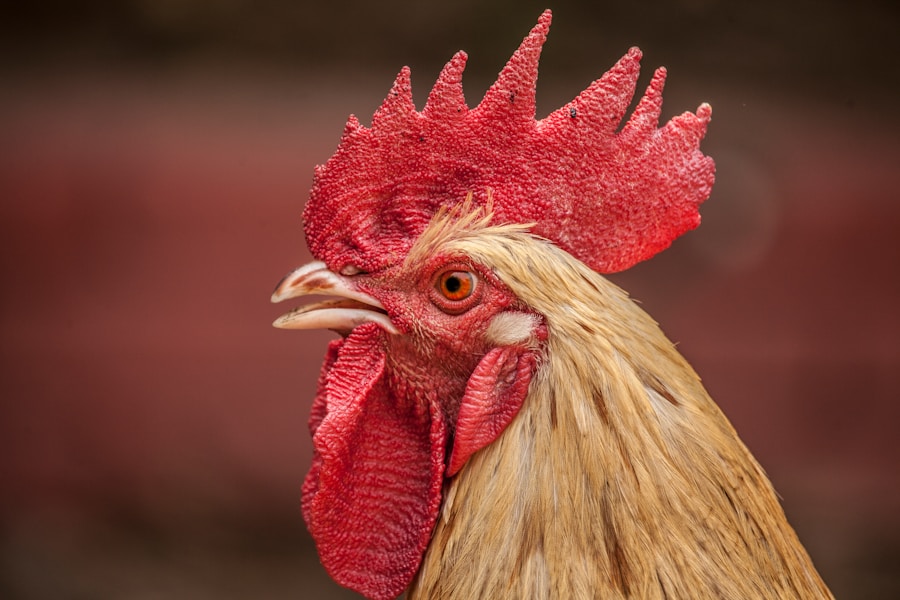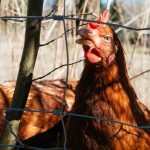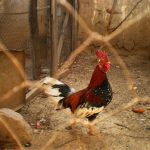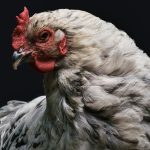Chickens are fascinating creatures with complex behaviors that are often overlooked. Understanding their behavior is crucial for their welfare and for those who work with them. Chickens are social animals that live in flocks, and they have a complex social hierarchy. They communicate with each other through a variety of vocalizations and body language, and they have a remarkable ability to recognize and remember individual faces. Chickens also have a strong instinct for self-preservation, and they are constantly on the lookout for potential threats. By understanding their behavior, we can better care for and interact with these intelligent birds.
Chickens are also known for their unique movements and behaviors, such as dust bathing, scratching, and pecking. These behaviors are not only important for their physical health, but they also serve important social functions within the flock. By observing and understanding these behaviors, we can gain insight into the social dynamics of chicken flocks and how they interact with their environment. Overall, understanding chicken behavior is essential for their well-being and for gaining a deeper appreciation for these remarkable birds.
Table of Contents
- 1 The Role of the Vestibular System in Chickens
- 2 The Fascinating Ways Chickens Use Their Neck Muscles
- 3 The Importance of Head Stability for Chickens
- 4 How Chickens Maintain Balance While Moving
- 5 The Connection Between Head Stability and Predation
- 6 Implications for Understanding Avian Evolution and Behavior
The Role of the Vestibular System in Chickens
The vestibular system is a crucial component of the chicken’s ability to maintain balance and coordination. This sensory system is located in the inner ear and is responsible for detecting changes in head position and movement. The vestibular system helps chickens maintain their balance while walking, running, and even flying. It also plays a key role in their ability to navigate their environment and avoid potential threats.
The vestibular system is also important for the chicken’s ability to orient itself in space. This is particularly important for chickens that are raised in free-range environments, where they need to navigate uneven terrain and avoid obstacles. By understanding the role of the vestibular system in chickens, we can gain insight into how they perceive and interact with their environment. This knowledge can help us create better living conditions for chickens and improve their overall welfare.
The Fascinating Ways Chickens Use Their Neck Muscles
Chickens have incredibly strong neck muscles that play a crucial role in their ability to move and interact with their environment. These muscles allow chickens to peck, scratch, and engage in other important behaviors that are essential for their physical and mental well-being. Chickens also use their neck muscles to communicate with each other through a variety of vocalizations and body language. By understanding the ways in which chickens use their neck muscles, we can gain insight into their social dynamics and how they interact with each other within the flock.
The neck muscles also play a key role in the chicken’s ability to defend itself from potential threats. Chickens have a remarkable ability to quickly turn their heads to assess their surroundings and identify potential predators. This quick reflex is essential for their survival in the wild, and it demonstrates the importance of their neck muscles in maintaining their safety. Overall, the neck muscles are a crucial component of the chicken’s physical abilities and play a key role in their overall behavior and well-being.
The Importance of Head Stability for Chickens
Head stability is crucial for chickens as it allows them to maintain balance and coordination while moving. The head is a heavy part of the chicken’s body, and it requires strong neck muscles and a well-developed vestibular system to keep it stable. Head stability is particularly important for chickens when they are walking or running, as it allows them to navigate their environment and avoid potential threats.
Head stability also plays a key role in the chicken’s ability to engage in important behaviors such as pecking, scratching, and dust bathing. These behaviors require precise control of the head and neck muscles, and without proper head stability, chickens would struggle to perform these essential activities. By understanding the importance of head stability for chickens, we can gain insight into how they interact with their environment and how we can create better living conditions for them.
How Chickens Maintain Balance While Moving
Chickens have a remarkable ability to maintain balance while moving, thanks to their well-developed vestibular system and strong neck muscles. When walking or running, chickens use a combination of head movements and body adjustments to keep themselves stable. They also rely on their keen sense of sight to navigate their environment and avoid potential obstacles.
Chickens also use their wings to help maintain balance while moving. By slightly adjusting the position of their wings, chickens can make subtle changes to their center of gravity, allowing them to stay stable while walking or running. This demonstrates the incredible coordination and control that chickens have over their bodies, and it highlights the importance of their wings in maintaining balance.
The Connection Between Head Stability and Predation
Head stability is crucial for chickens when it comes to avoiding potential predators. Chickens have a keen sense of sight and are constantly on the lookout for potential threats. Their ability to quickly turn their heads to assess their surroundings is essential for detecting predators and avoiding potential danger. Without proper head stability, chickens would struggle to quickly assess their environment and would be more vulnerable to predation.
In addition to visual cues, chickens also rely on their vestibular system to detect potential threats. The vestibular system helps chickens detect changes in head position and movement, allowing them to quickly react to potential danger. By understanding the connection between head stability and predation, we can gain insight into how chickens have evolved to survive in the wild and how we can create better living conditions for them in captivity.
Implications for Understanding Avian Evolution and Behavior
Studying the behavior of chickens has important implications for understanding avian evolution and behavior more broadly. Chickens are descendants of wild junglefowl, which were originally native to Southeast Asia. By studying the behavior of modern chickens, we can gain insight into the behaviors and adaptations that allowed their wild ancestors to survive in their natural habitat.
Understanding the role of the vestibular system, neck muscles, head stability, and balance in chickens can also provide valuable information about avian evolution. These traits have likely evolved over millions of years to help birds navigate their environment, avoid predators, and engage in important behaviors such as foraging and mating. By studying these traits in modern chickens, we can gain insight into how they have evolved over time and how they contribute to the overall behavior of birds.
In conclusion, studying the behavior of chickens is not only important for their welfare but also has broader implications for understanding avian evolution and behavior. By gaining insight into the ways in which chickens use their neck muscles, maintain head stability, and balance while moving, we can gain a deeper appreciation for these remarkable birds and gain valuable information about avian evolution more broadly.
Meet Walter, the feathered-friend fanatic of Florida! Nestled in the sunshine state, Walter struts through life with his feathered companions, clucking his way to happiness. With a coop that’s fancier than a five-star hotel, he’s the Don Juan of the chicken world. When he’s not teaching his hens to do the cha-cha, you’ll find him in a heated debate with his prized rooster, Sir Clucks-a-Lot. Walter’s poultry passion is no yolk; he’s the sunny-side-up guy you never knew you needed in your flock of friends!







